The character of Superman, first created in comics by Jerry Siegel and Joe Shuster in 1933, has a longer history of screen adaptations than most people realize.
Though many know the most recent movies were preceded by the 1978 movie Superman, which starred Christopher Reeve and was followed by three sequels in the 1980’s; and some are aware that pop culture has a friendly niche for the 1950’s Superman television show featuring George Reeves, two episodes of which were mashed into a theatrical release titled Superman and the Mole Men in 1951; fewer know of the serials Superman and Atom Man vs. Superman, that ran before feature films in theaters in the late 1940’s, and in which Kirk Alyn was the first actor to play the role in a screen adaptation.
The very first on screen version of the Superman character, however, goes back even earlier—to a brilliant series of nine animated shorts produced by the ground breaking animation studios of Max and Dave Fleischer from 1941 to 1942, and eight more produced by different directors under the studio’s reorganized identity as Famous Studios from 1942 to 1943.
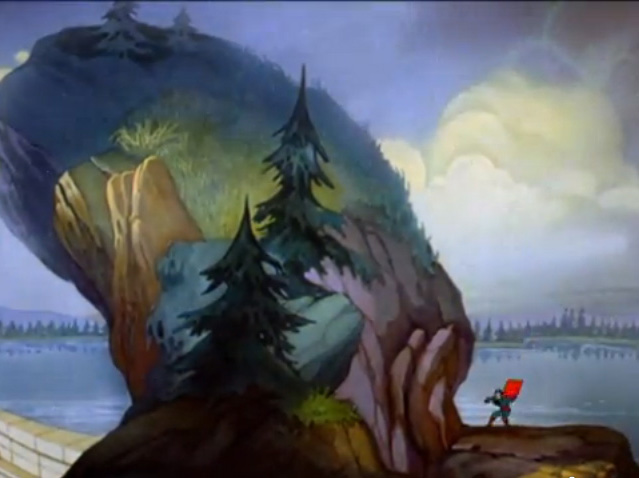
The first nine in particular, from the studio that created the wildly imaginative Betty Boop and Popeye cartoons and the landmark Gulliver’s Travels animated feature, are considered high points in the history of animation. They are visually beautiful, and in tone and mood are essentially a film noir version of the character, infused with strong elements of science fiction in keeping with the era’s fascination with characters like Flash Gordon and Buck Rogers.
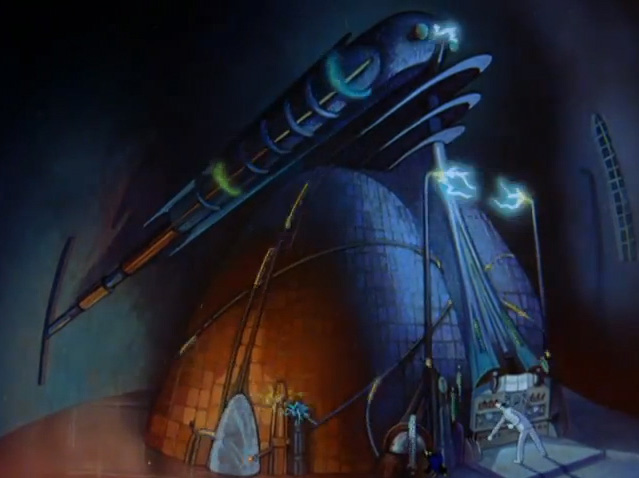
Amid 1940’s fashions and wonderfully stylized Art Deco architecture, Superman battles mad scientists, remote controlled flying robots, an enormous Godzilla style monster, a not quite Kong-size giant gorilla, artificial earthquakes, villains in a bullet shaped flying rocket car and a comet drawn down from space by a giant magnet—along with other more prosaic villains and natural disasters.

All of this is portrayed in a beautifully rendered and art directed 1940’s style of cinematography, with moody pools of light, silhouetted figures, long shadows cast against walls and window shades, a deep rich color palette and terrific evocations of effects like electric arcs, x-ray vision, human and machine flight, nighttime city scenes, mist and atmosphere that would have done many traditional directors and cinematographers of the period proud.
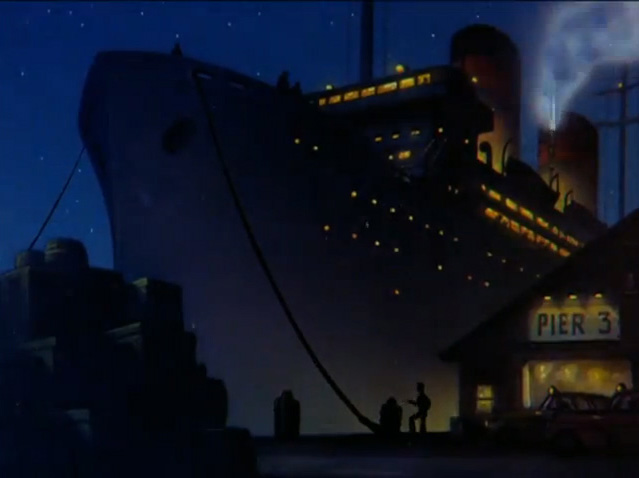
The stories were simplistic to fit into the cartoons’ eight minute format, part of which was taken up with introductions and credits, but they were engaging and managed to be more coherent than many contemporary movie scripts.
Watching them today, the characters can seem a bit naive—with plucky Lois Lane the eternal damsel in distress, never quite making the connection between Superman and her co-reporter Clark Kent in his round-rimmed glasses and fedora—but the series played it straight, right down to the hand painted version of the Paramount opening logo. It deftly avoided the camp silliness into which the character would later descend in the hands of DC Comics in the 1960’s.
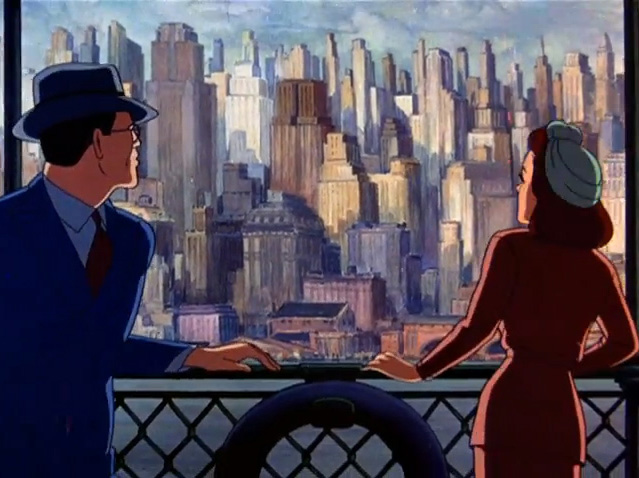
This is also not the nearly omnipotent planet-moving Superman that came later; this is a Superman for whom stopping a runaway train or breaking free of high tension wires requires real effort, and his heroic actions involve a greater sense of personal risk—without the need for awkward plot devices like Kryptonite. As a result, he is a much more engaging character.
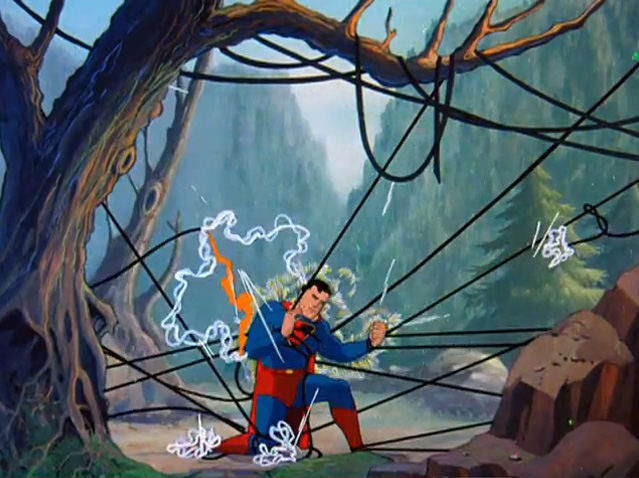
Though the cartoons themselves are not as familiar as they deserve to be, they are the origin of many of the character’s pop culture badges. It was in this series that he struck the heroic pose—fists on hips, cape waving in the wind, changed clothes in a phone booth after announcing “This is a job for Superman!” and transitioned from “leaping tall buildings in a single bound” to actually flying.
My favorite of the shorts is the second in the series, The Mechanical Monsters, in which the blend of film noir, science fiction and art deco elements is at its best, and which was obvious inspiration for 2004’s Sky Captain and the World of Tomorrow (in look and feel, if not in coherent storyline), and perhaps parts of Indiana Jones and the Temple of Doom.
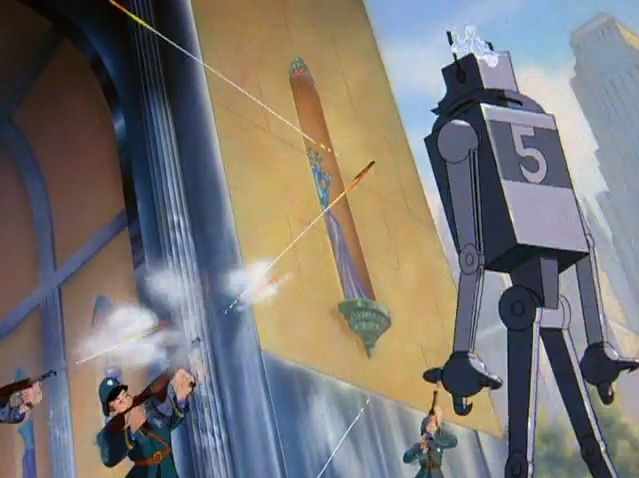
The cartoons had a dramatic influence on subsequent animators, down to the current day, and were the models for the best of the Warner Brothers TV cartoons of the 2000’s, even though their style and approach were better applied to Batman than to revival of the Superman character.
The Fleischer Studios Superman cartoons have been available on the Internet Archive and YouTube for some time in versions of varying quality. Recently they have been beautifully remastered from the original negatives by Warner Brothers (though with a few oddly unnecessary changes) and released on DVD and iTunes, as well as being made available on their official YouTube channel for all to enjoy.
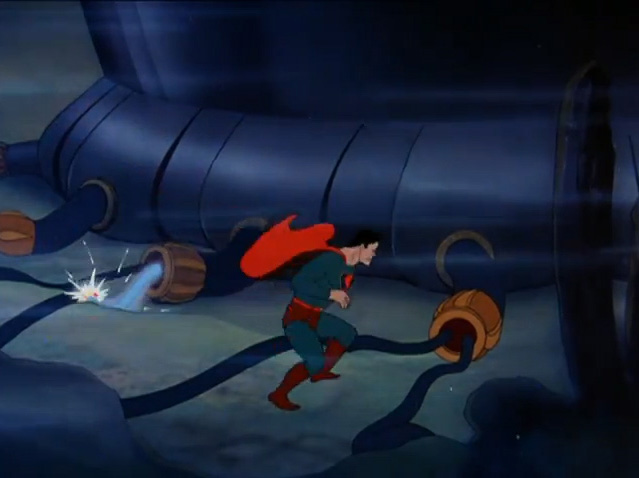
I know it will never happen, but I like to imagine what it would be like if this were the version of the character green-lighted by the current studio for big budget production with a good director—a retro-future film noir period piece with a more human and vulnerable hero.
That would be just super.
Charley Parker is the author of the visual arts blog Lines and Colors and the creator of the interactive webcomic, Argon Zark!










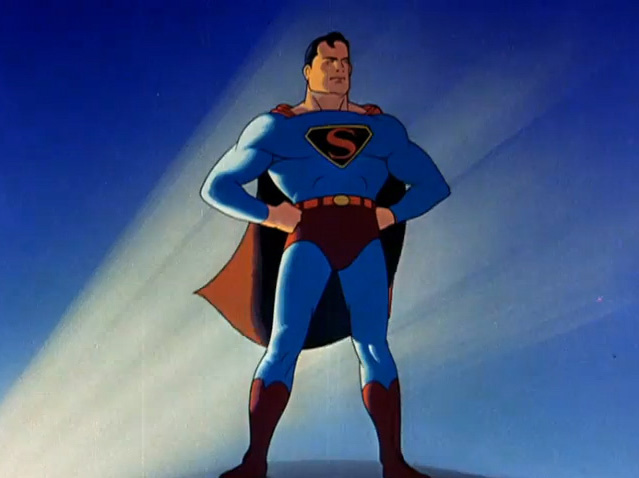
The order of getting acquinted to the various Superman incarnation was quite different for me – I didn’t know the live action TV superman, let a lone the film serial Superman, even existed until I ran across some mentions online. But I remember seeing the Fleicher Cartoons when I was quite young (I am not old enough to have watched the originals broadcasts!), on some local channel with lots of, uh, “legacy material” (i.e. old crap). I specifically remember the one with the flying bullet car – but wasn’t there also a cartoon or two in which he fights Nazis? I think I remember seeing Hitler in one!
One of my favorite moments in this series is one where Clark, seeing the threat, delivers the line in complete deadpan. (“THIS looks like a job for Superman.”) You get a sense of a Clark Kent who sees his role as solving the big problems, not rescuing cats from trees or stopping simple robberies.
Superman and the Mole Men wasn’t a mashup of TV episodes; it was a theatrically released pilot film that preceded the Adventures of Superman TV series, and was later cut into two episodes for that show.
Also, the catchphrase “This is a job for Superman!” originated in the radio series which preceded the Fleischer shorts by about a year. It was a way of tipping off the radio audience that Clark was about to change into Superman, something that they couldn’t actually see happening in that medium. The stars of the radio series, Bud Collyer (Clark/Superman) and Joan Alexander (Lois), reprised their roles for the Fleischer shorts (and again for Filmation’s Superman cartoon in the late ’60s).
These cartoons are fantastic. The Fleischers used a rotoscoping technique to animate much of the characters’ movements, as they did in “Gulliver.”
I think Lois is more than a damsel in distress in these shorts. Yes, she always has to be saved by Superman ( doesn’t everybody?), but she has a real fighting spirit in her own right. There’s one episode (I think it’s Runaway Train), in which she picks up a machine gun and starts blazing away at the bad guys.
But Charley, what are the “unnecessary changes” you refer to in WB’s remastered versions?
I chose to show these to my 3 1/2 year old earlier this year…for about a month he was completely and utterly enthralled by them. There is a great balance of fun, scary, heroic, and tense sequences without straying into adult territory. His favorites were the Magentic Telescope, Volcano and Mechanical Monsters (I opted not show him some of the more racially charged episodes). When we went to Free Comic Book Day, all he wanted was Superman stuff, and he’s become the cornerstone of his interests. I didn’t see these until I was much older, but had seen stills of them in a great book called Fabulous Fantasy Films that was lying around my house when I was growing up. Finally getting to watch these cartoons in my adulthood was a revelation, and I was very excited to used them as a jumping-off point for my little guy.
I have very fond memories of these cartoons. One of my earliest memories is waking up at about 7 am on Sunday morning and (no doubt to my parents’ relief) immediately turning on the TV to catch them on the local station. I was especially struck, then and now, by Bud Collyer’s continued (from the radio show) use of two different voices for Clark and Superman, and his change of voices right in the middle of the catch-phrase – “(tenor) This is a job, (bass) for Superman.”
Oh wow, these look scrumptious. I had no idea.
Speaking of the serials, there’s a fun ongoing retrospective of all the Superman feature-length movies here (currently at the 1978 movie; has links to the previous installments).
Oh man I like Superman so much. I for one would far rather an art-deco noir film than broody Nolany confusion. I have low expectations for the Snyder film, but I will happily eat crow if it is good.
I first became aware of Superman via the George Reeves shows. They were shown on and off throughout my whole kid-hood. I watched a few episodes about ten years back, and they seem really low-rent. Not bad, but kind of small potatoes. I guess the movies and later productions spoiled me.
The Superman comics that were around when I was a kid were utterly opaque, full of “See Issue #7223” type references. They weren’t as unapproachable to a nine year old than the Marvel comics, but I just couldn’t get into them.
I bought, at an SF convention maybe 25 years ago, a videotape full of the 1940s cartoons. A real joy! Since then they’ve appeared on CD-ROM (in the form on MPEG-1 movies) and Dollar store DVDs.
I watched the movie serials, on DVD, a year or two ago. Not bad, but again kind of small potatoes. Lex Luthor, in the second serial, is great, a really smart gangster. (Who also has managed to find out Superman’s entire backstory, and in one installment that seems like filler, narrates over the origin story footage from the first serial!)
I’m also one of those of “a certain age” that first encountered these cartoons on local TV.
Watching them again, what impresses me greatly about them now is how concise the storytelling is. You could imagine any one of these cartoons as a 16- or 32-page comic-book story of that era, but here fit neatly into a 7-minute cartoon. There’s not a single wasted shot or moment of dialogue or characterization–everything’s timed to pull off a well-balanced and satisfying narrative in the prescribed length.
If you haven’t seen it yet, check out Robb Pratt’s animated short film “Superman Classic,” which is very reminiscent of the Fleiscer shorts.
It may also be worth noting that Miyazaki Hayao was heavily influenced by “The Mechanical Monsters”, as seen in his giant robot designs, particularly in Laputa and his Lupin III episode “Farewell My Beloved Lupin“.
I first encountered a few of these (the train robbery, bullet car, and mummy episodes) on a collection of random old cartoons my parents got somewhere. I remember liking them (although the mummy cartoon scared me so much I couldn’t sleep whenever I saw it), although it wasn’t until I rewatched all of them on DVD that I realized how lush the coloring and how beautiful the animation is. Also, I got to see the…less racially sensative episodes, such as for instance “The Japoteurs” which is about exactly what you think it is. Or the weird episode with the Native American mad scientist (at least he was defying stereotypes…I think)
My favorite superhero treatments may be these, the Bruce Timm/ WB era, and The Incredibles.
Maybe the modern Marvel movies.
My first acquaintance with Superman probably was #100 of the translated to Dutch comic book somewhere between mid to end 70’s. It really stood out in a newsstand rack in the local toy store, cover all white with a sad/defeated looking Superman and a text saying “Save Superman (in Dutch of course)”. Big muscles, shiny blue and red suit, the man of steel, that big S……..I just had to have it, can’t explain why other than what I said above. And my mom got it for me. Probably my starting point where the love for superheroes is concerned. Around the same time you got trading cards with bubble gum, because the movie was coming too……good times! I saw the Fleischer cartoons when I was an adult…..and loved them like a little kid would. What a joy! I owned a videotape with the cartoons and bought them on dvd later on too……charming as can be, the old craft of cartooning at its best, the simple but very heroic stories. What’s not to love about them?
I remeber these shorts being on TV during the summer on the Local ABC station during the mid to late 1970’s. I used to watch them at my late aunt & uncle’s camp in a nearby town. I think they were sponsered by a Store called Frankenstien’s out of Milbridge, Me. I think they were filler on Sun. Afternoon’s in place of whatever network was offering. These were the days before the bloody infomericals.
@2 – The original radio program illustrated the change from Clark Kent to Superman using just the voice of the actor. Bud Collyer used a soft higher pitched voice for Clark Kent’s character while Superman had a stronger deeper voice, so he would say “This” in his Kent voice, “is a job” in a slightly lower voice, and “for Superman” in his strong baritone. You can hear some of the old programs here: http://archive.org/details/Superman_page01
@16: And I believe I’ve read that, contrary to what one would expect, Collyer’s natural voice sounded more like his Superman than his Clark.
Just a word of warning. I’ve had three sets of these collections – first on VHS, later two on DVD – and the quality of both audio and video varies, sometimes dramatically. My favorite of the three sets is _The Complete Superman Collection – Diamond Anniversary Edition_ from Bosko Video. The colors pop, the sound is clear, and I believe they are complete and unedited.
I used to love watching those old Max Fleisher Superman cartoons on tv when I was little. I own most of them on DVD and plan to show them to my grandchildren.
I’ve had the DVD set for years. My kids have seen them dozens of times and still enjoy them (a huge standard for a couple of older Autistic kids who usually go for the modern fare). It has all the elements of the classic Superman comic, which I grew up on (70s). Their age make the collection very resonably priced. I highly reccomend them.
We had about four of these on VHS growing up – Magnetic Telescope, Terror on the Midway, Bulleteers, and Volcano – it is the only VHS we ever wore out. I remember watching Magnetic Telescope so often I could recite what little dialogue there is from memory. And that one even has an extended origin story!